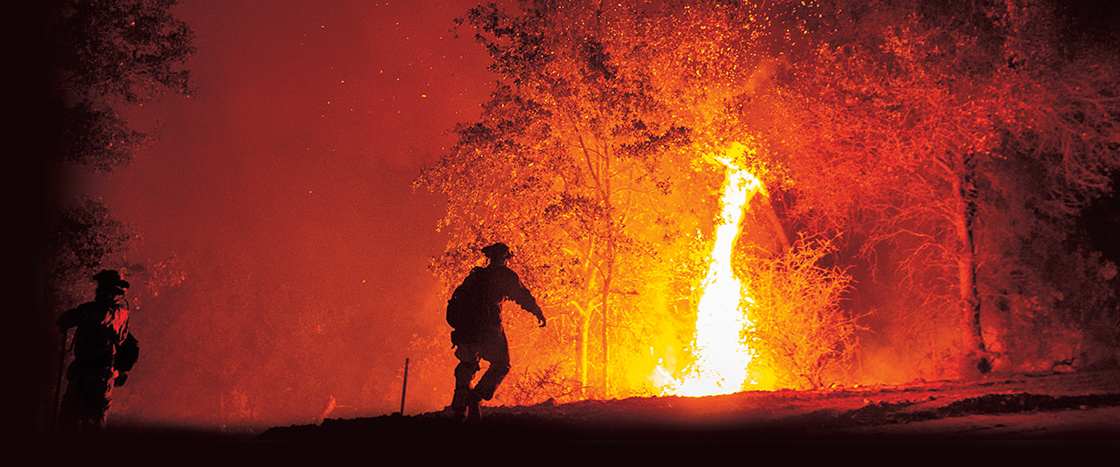On November 8, 2018, a power line started a small fire in Northern California. Over the next two weeks, that fire blazed into a massive wildfire that became known as the Camp Fire. It was the deadliest fire in the U.S. in 100 years. Eighty-eight people died and about 19,000 structures burned, including most of the town of Paradise, California.
In the past, wildfires were mainly started by natural causes like lightning strikes. Occasional fires can be beneficial because they add nutrients to the soil. But human activity has increased the chances of accidents like the one that started the Camp Fire.
Scientists have found that global warming increases the risk of wildfires too. Rising temperatures make land dry and strengthen winds that spread the flames. This fuels dangerous wildfires.
Researchers are studying the factors that influence wildfires and how they spread.
It was November 8, 2018. A power line started a small fire in Northern California. That fire blazed into a massive wildfire over the next two weeks. The fire became known as the Camp Fire. It was the deadliest fire in the U.S. in 100 years. Eighty-eight people died. About 19,000 structures burned. Most of the town of Paradise, California, was destroyed.
In the past, wildfires were mainly started by natural causes like lightning strikes. Occasional fires can be beneficial. Fire can add nutrients to the soil. But human activity has increased the chances of accidents like the one that started the Camp Fire.
Scientists have found that global warming increases the risk of wildfires too. Rising temperatures make land dry. Winds grow stronger. The winds spread the flames. This fuels dangerous wildfires.
Researchers are studying the factors that influence wildfires and how they spread.

